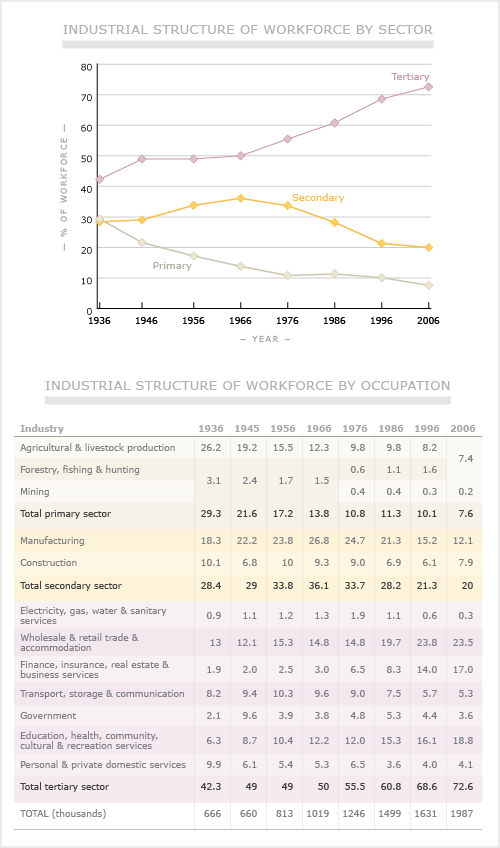
This graph and chart show how the distribution of the workforce (including Māori) changed after 1936. There was a continuing decline in the proportion of people working in the primary sector, especially in farming. For a time, under the boost to manufacturing which import controls provided, the proportion of the population working in the secondary sector rose, but once duties began to be lowered and import licensing relaxed in the 1980s, the manufacturing workforce diminished relatively. The services grew more rapidly, especially wholesale and retail trade, accommodation, finance, insurance, real estate and business services, and health and education services. Among the reasons for their growth were consumers demanding more of these services, the rising importance of part-time service workers (especially in retail trade), and the stronger productivity growth in the primary and secondary sectors, which meant they could produce relatively more with fewer workers.
Te whakamahi i tēnei tūemi
Te Ara - The Encyclopedia of New Zealand

This item is licensed under a Creative Commons Attribution-NonCommercial 3.0 New Zealand Licence
Source: Statistics New Zealand






Tāpiritia te tākupu hou